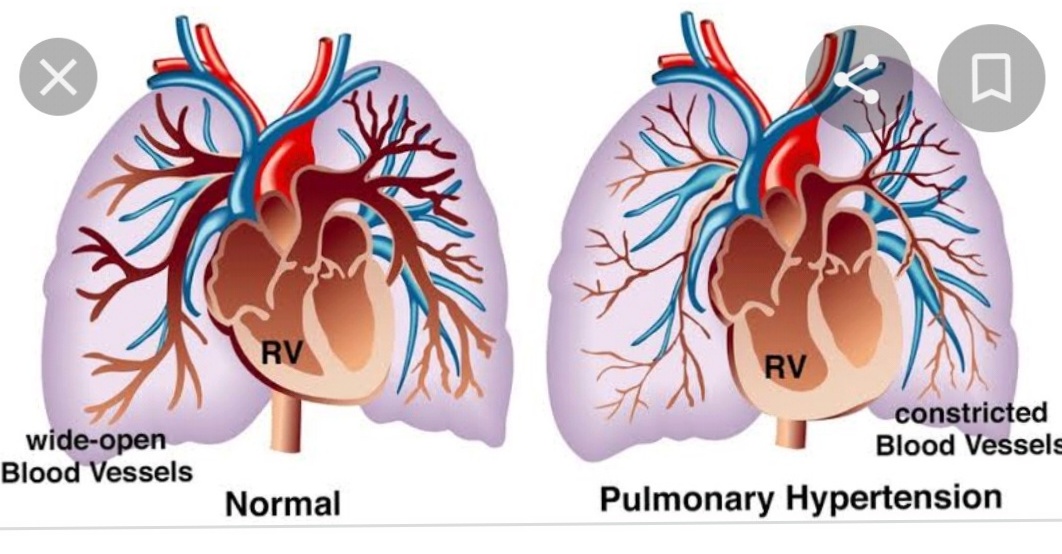“Ceftriaxone-Resistant Typhoid Cases in City Alarm Doctors”
Introduction
The recent detection of ceftriaxone-resistant typhoid cases in Pune has raised serious concerns among doctors and public health experts. Typhoid fever, caused by Salmonella Typhi, has traditionally been treated with third-generation cephalosporins like ceftriaxone. However, reports now show that some strains are no longer responding to this widely used antibiotic. According to infectious disease specialists, the rise in resistance is closely linked to the overuse and misuse of antibiotics in both humans and livestock.
While only a handful of cases have been confirmed so far, experts warn that resistant bacteria can spread rapidly, potentially leading to larger outbreaks. Doctors are turning to alternatives like azithromycin and even revisiting older drugs such as chloramphenicol and co-trimoxazole, which are showing renewed effectiveness. The situation highlights the urgent need for responsible antibiotic use, blood culture-based diagnosis, and stricter hospital prescribing protocols to prevent India from facing a wider drug-resistance crisis similar to that already seen in Pakistan and Bangladesh.
Pune: At least two cases of antibiotic resistance in typhoid-causing bacteria have been reported by the city’s doctors, and some cases of Salmonella typhi have been shown to be unresponsive to ceftriaxone, a widely prescribed treatment for the infection in India, which experts have linked to the drug’s widespread and irrational use.
“Culture reports from at least two patients this year have verified ceftriaxone resistance. Fortunately, we were able to treat these patients effectively with azithromycin because the bacteria is still susceptible to it, Dr. Ameet Dravid, a senior expert in infectious diseases, told TOI.


The trend was concerning, according to the physicians, even if there are few cases of resistance right now. “Once resistance emerges, it can spread rapidly. It might be two cases today, but it could be ten or twenty tomorrow. Bacteria can accomplish this because they can transmit resistance genes between themselves. I hadn’t encountered any typhoid that was resistant to ceftriaxone until last year.
However, Dr. Dravid stated that this year we have begun to observe a few culture-proven cases, which is a positive but concerning indicator.
“We are now beginning to see occasional cases of Salmonella typhi not responding well to ceftriaxone, which is usually our first-line of treatment,” said Dr. Sujata Rege, a consultant in infectious diseases at Jupiter hospitals and Symbiosis University.
These samples are being sent to CMC Vellore for molecular testing. Gujarat had a typhoid outbreak that was resistant to ceftriaxone, and although the number of cases here is still small, resistance is growing.


She said that in such situations, doctors frequently need to switch to azithromycin, but it’s crucial to protect this medication by not using it indiscriminately for common respiratory illnesses. “Interestingly, older medications like chloramphenicol (which was long discontinued) and co-trimoxazole (Septran) are exhibiting renewed sensitivity against typhoid. The fact that this represents a change in resistance trends that were previously concentrated in Pakistan and Afghanistan but are now also manifesting in India is cause for concern. Resistance is missed unless blood cultures are performed from the start. We are less able to monitor and react to resistance trends when many patients are initiated on antibiotics like cefixime or ceftriaxone without cultures. According to Dr. Rege,
“Blood culture continues to be the gold standard for diagnosis and should ideally be conducted before any antibiotic is prescribed.”
“In the past, medications such ciprofloxacin and levofloxacin were effective against typhoid,” Dr Mahesh Kumar Manohar Lakhe, an infectious diseases specialist at Sahyadri Hospitals, informed TOI.
However, resistance to these agents has significantly risen during the past 20 to 30 years. Then, we began to depend more on third-generation cephalosporins, such as ceftriaxone. But lately, we are also starting to see a few instances of ceftriaxone resistance. In a patient who had traveled from Vasai, which is close to Mumbai, I have personally treated a case of ceftriaxone resistance that has been demonstrated by culture.
“Even though the numbers are very small, it indicates the beginning of a trend that has already been reported more widely in countries like Pakistan and Bangladesh,” Dr Lakhe stated. Although a lot of this is still unpublished data right now, coworkers in Delhi, Kolkata, Chennai, and other places have also said they’ve seen similar instances.
“Antibiotic resistance in typhoid is due not only to misuse of drugs in humans but also to rampant use of antibiotics in poultry and livestock,” stated Dr. Renu Bharadwaj, a former professor and microbiologist at BJ Medical College and Sassoon Hospital. Because birds are regularly administered antibiotics via their food, the Salmonella bacteria circulating in animals already contains resistance genes. Even if the patient has never taken these antibiotics before, such strains are immediately resistant when they infect people.
She went on to say that “another major issue is irrational prescribing practices in hospitals.” Without conducting a blood culture or antibiotic sensitivity test, many doctors prescribe patients greater antibiotics like ceftriaxone. Excessive use in hospitals and ICUs promotes the circulation and transmission of resistance genes to Salmonella. Consequently, if a patient genuinely requires ceftriaxone, the infection might not respond. We risk losing our last-line medications if stricter protocols aren’t adhered to, such as requiring sensitivity tests before using higher antibiotics.
The bacterial agent that causes typhoid fever, Salmonella Typhi (S Typhi), has antibiotic resistance, which is a worldwide health concern, particularly in low- and middle-income nations, according to Dr. Piyush Chaudhari, an infectious disease specialist at Jehangir Hospital. With travel-related cases documented in other nations, Pakistan has seen a notable increase in highly drug-resistant S Typhi. Other areas with high rates of antibiotic resistance include portions of South Asia, Africa, and some sections of Southeast Asia, Central and South America, and the Caribbean. While Salmonella is far less resistant to cephalosporins in India, it is undoubtedly a worry that is likely to grow if we don’t use antibiotics wisely.
If any patient has any ENT -Ear nose throat problems and requires any , consultation ,online consultation ,or surgery in clinic of ENT specialist Doctor Dr Sagar Rajkuwar ,he may TAKE APPOINTMENT BY CLICKING ON THE LINK GIVEN BELOW-
Clinic address of ENT SPECIALIST doctor Dr Sagar Rajkuwar-
Prabha ENT clinic, plot no 345,Saigram colony, opposite Indoline furniture Ambad link road ,Ambad ,1 km from Pathardi phata Nashik ,422010 ,Maharashtra, India-Dr Sagar Rajkuwar (MS-ENT), Cel no- 7387590194 , 9892596635
Symptoms and Causes
What are the signs and symptoms of typhoid fever?
A high fever that might last for weeks if not treated gives typhoid fever its name. In many cases, it gradually worsens over a few days.
The symptoms of typhoid fever, which is brought on by the bacteria Salmonella Typhi, can vary widely in intensity. A slow start of fever, which may be accompanied by headaches, loss of appetite, and stomach pain, is frequently one of the initial symptoms. As the infection worsens, more serious symptoms can appear, such as a persistent high temperature (up to 104°F or 40°C), extreme abdominal discomfort, diarrhea or constipation, and even a rose-colored spot rash. Typhoid fever can occasionally result in problems such as intestinal bleeding, perforation, or neurological symptoms such disorientation or delirium.


The symptoms are as follows:
Early Signs (frequently confused with other diseases):
- Gradual Fever: a fever that develops over several days and may start at a low grade.
- Headaches: Headaches that persist and sometimes get worse as the fever goes on are typical.
- General Symptoms of Typhoid Fever Include Weakness and Fatigue: A general sense of weakness and fatigue is a sign of typhoid fever.
- A major reduction in appetite that results in unintentional weight loss is known as loss of appetite.
- Abdominal Pain: The majority of individuals experience abdominal pain or discomfort, especially in the lower right quadrant.
- Depending on the person, either constipation or diarrhea might occur.
Symptoms in Later Stages:
- High Fever: The temperature may get fairly high as the illness progresses, reaching 104°F (40°C).
- Rash: In rare cases, a rash of rose-colored patches can develop on the chest and trunk.
- Severe Abdominal Pain: In extreme cases, the pain might be excruciating and accompanied by nausea and vomiting.
- Diarrhea (or Constipation): Severe diarrhea or, in some cases, constipation, can occur.
- Delirium or Mental Confusion: Confusion, delirium, and even hallucinations can manifest in extreme instances.
- Untreated, typhoid fever can cause complications such as neurological issues, intestinal hemorrhage, and intestinal perforation.
Key Factors to Take into Account:
The key is early diagnosis:
To avoid significant problems, quick identification and antibiotic treatment are essential.
Severity Varies:
The severity of symptoms can vary significantly from one individual to the next.
Silent Carriers:
While some people may carry the bacteria without exhibiting any symptoms, they can still spread the illness.
When to Seek Medical Care:
It is important to seek medical help right away if you are experiencing any of the aforementioned symptoms, particularly if you have just visited a region where the risk of typhoid is high.
What causes typhoid fever?
The bacteria S. Typhi is responsible for causing typhoid fever. It may contaminate water and food since it resides in the gut (intestines) of afflicted individuals.


What are the methods by which typhoid fever spreads?
Contaminated water or food that contains S. Typhi is the most common mode of transmission for typhoid fever. It’s possible for this to occur if someone with typhoid handles anything you consume or drink without washing their hands. Additionally, waste water (water with poop or pee in it) may contaminate the food and beverages you consume.
If someone doesn’t wash their hands after using the restroom, you can catch typhoid from them. They may leave behind bacteria that can be transmitted to the next person who touches it by contacting surfaces and things like doorknobs or phones.
Is kissing a method of transmission for typhoid?
Kissing is not how typhoid is transmitted. Typhoid fever is not often contracted directly from another person. If they don’t wash their hands after using the restroom, you can still contract it by touching something they’ve touched.
What are the steps of typhoid fever?
Typhoid fever symptoms can manifest gradually over four phases. You can prevent yourself from progressing to later stages by receiving antibiotic therapy early on.
Anywhere between five and fourteen days after exposure to S., you may begin to experience symptoms of typhoid fever. Typhi. A fever that increases gradually over a few days is the first sign; it is referred to as “stepwise” because it rises in stages. At this point, the bacteria are invading your bloodstream.
The germs are multiplying in your Peyer’s patches (part of your immune system that identifies harmful invaders) during the second week of fever. You will begin to experience abdominal discomfort and other gastrointestinal symptoms, such as diarrhea or constipation. Tiny pink patches on your skin that resemble a rash are possible. These are referred to as “rose spots.”
Stage 3. The bacteria can cause significant harm if not treated with antibiotics, generally around the third week after the onset of your symptoms. Some individuals experience severe consequences, such as encephalitis (inflammation in your brain) and internal bleeding.
The majority of people start to recover in stage four. Your high fever starts to subside. You might still be contagious even after you feel better because S. Typhi can survive in your gallbladder without causing any symptoms.
Summary
Doctors in Pune have reported the city’s first few cases of ceftriaxone-resistant typhoid, raising concerns about the growing threat of antibiotic resistance in India. While patients responded to alternative drugs like azithromycin, experts warn that resistance could spread quickly if antibiotics continue to be overused and prescribed irrationally. Specialists emphasize that blood cultures remain the gold standard for diagnosis and must be done before starting antibiotics to track resistance trends effectively.
Physicians also highlight that the problem is not limited to humans—widespread use of antibiotics in poultry and livestock is contributing to resistant strains of Salmonella Typhi. Some older medicines, such as chloramphenicol and co-trimoxazole, are showing renewed effectiveness, but doctors caution that without stricter antibiotic protocols, even last-line treatments may fail.
The emergence of ceftriaxone-resistant typhoid in India mirrors trends already seen in Pakistan, Bangladesh, and other parts of South Asia, underlining the urgent need for responsible antibiotic use and stronger surveillance measures to prevent a major public health crisis.
References-
This article is written as per the clinical experience of ENT Specialist doctor -Dr Sagar Rajkuwar(MS-ENT) ,Nashik Maharashtra -Clinic website-www.entspecialistinnashik.com References taken from-
https://share.google/LaLUrMIvAV2rltNt6



